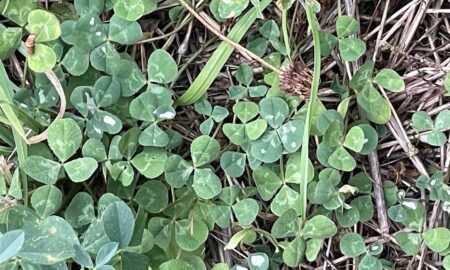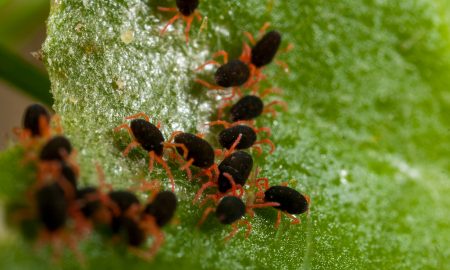The PestFacts team received reports of large numbers of Rutherglen bug in some south-eastern cropping regions over summer.
The Rutherglen bug is a warm-season pest which is normally only of concern for winter crops in late spring/early summer during seed set and in summer crops.
However, in some years it is possible for conditions to support populations long enough to feed on emerging crops in autumn in the south-east, presenting a particular risk to canola.
What is the Rutherglen bug?
The Rutherglen bug (Nysius visitor) is a highly sporadic, native true bug (hemipteran) which occurs across grain growing regions in Australia.
The Rutherglen bug has a broad host range, including native plants, weeds and numerous agricultural crop species. Some key broadacre crop species impacted by Rutherglen bug include canola, sunflower, safflower and sorghum. Favoured weed hosts are wireweed and common purslane (summer-autumn) and capeweed (winter-spring), in which they can build up in large numbers before moving onto crops.
As an insect with piercing and sucking mouthparts, the adults and nymphs feed on sap from stems, leaves, flowers and seeds.
Adult Rutherglen bug are small, about 4 to 5 mm in length, with a narrow, elongated body that is brownish-black in colour. They have prominent dark eyes and long, thin antennae. The wings of the adult Rutherglen bug fold flat on their backs and are partially transparent with a distinct black and white pattern. Nymphs are wingless and have a dark red, pear-shaped body.
Risk for winter grains
The Rutherglen bug is a warm season pest and is most abundant in spring and summer in south-eastern Australia. During this time large influxes of Rutherglen bug can migrate from distant locations into maturing and windrowed canola and become a grain contaminant.
The Rutherglen bug is not often seen during the colder months in the south-east. The threshold temperature for egg development is 14.5°C, and 15°C will kill most eggs, medium nymphs and 1st instar nymphs.
However, this species is unpredictable. There are years where large populations are present during autumn when winter crops are being sown.
This year, high numbers were sighted in summer weeds, canola stubble and native plants during the warmer months and it’s unknown whether there could be more migrations from northern regions.
Furthermore, large areas of Victoria and southern NSW have a high chance of above median temperatures in April to May, and an even higher chance of a warmer than average winter, which could mean that populations can persist longer than usual.
If present at establishment feeding by high numbers of Rutherglen bug can cause cupping of young leaves, retardation of emerging seedlings and seedling death, particularly in canola.
Management at establishment
The Rutherglen bug is not a typical pest of establishing canola in the south-east and thresholds are unavailable at this growth stage.
If high Rutherglen bug numbers continue to persist in paddocks going into canola, here are some points to consider:
A limited window of vulnerability
In the case of high numbers of Rutherglen bug present, young canola will be most vulnerable to feeding damage at the very early seedling stage.
Once crops become established and start to advance, this will afford them more protection against Rutherglen bug feeding and management is less likely to be required.
Chemical management of the Rutherglen bug doesn’t guarantee a clean crop
Chemical applications can be ineffective due to the bug’s ability to reinvade the crop after spraying. Furthermore, if the insecticide used has little residual activity, the individuals re-invading the crop post-spray have a good chance of surviving and repeat spray applications may be necessary.
Is strategic spot or border spraying an option?
The available insecticide options for Rutherglen bug control are broad-spectrum organophosphates and synthetic pyrethroids; there are no selective chemical options available. Use of these insecticide groups will significantly reduce the ability of beneficials to contribute to the suppression of pest populations.
While beneficials may have little impact on the immediate Rutherglen bug populations, the wider impact of insecticides on the beneficials needed to control other crops pests that arise during the season needs considering.
To help conserve beneficial populations consider strategic spot or border spraying. As Rutherglen bug tend to be patchily distributed or concentrated around crop margins, spraying an entire paddock may not be necessary.
More information
Rutherglen bug in canola – IPM Guidelines for Grains
Cover image: Photo by Hayden Lunn





